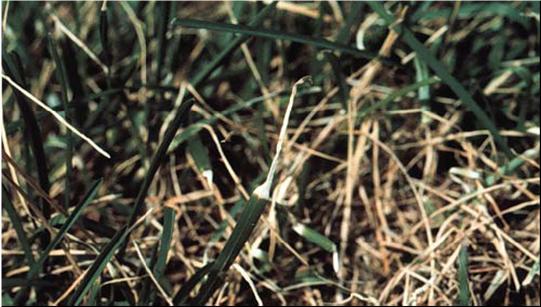Home / Information & advice / Turf & Lawns / Lawn diseases / Leaf blight
If you answer yes to these questions, you may have leaf blight disease in your turf and you may have to control it.
Leaf blight disease is caused by fungi that attack and kill the leaves of turf. In general, leaf blight does not kill the entire turfgrass plant, and once the disease stops developing, the turf will recover.

However, when cool wet weather persists for weeks at a time and your turf is under fertilised, the fungi can become so severe that it can kill your turf. There are many different fungi that can cause leaf blight, but most of them behave similarly and can be managed using the same techniques. Most leaf blight fungi produce abundant spores (microscopic seed-like cells) that can spread the fungus in your turf.
When you mow the lawn, aerate, walk on, or roll your turf, you can move the spores. The spores are too small for you to see and they are not produced on dry leaves like rust disease, so you will not see them on your shoes. When they attack your leaves, they will produce very small yellow spots that turn tan coloured or black and sometimes have a red border. You can see the spots with your naked eye. When the weather is dry and sunny, leaf spots are generally not a problem. The taller your grass, the more disease you will have.
The methods used to control the disease are quite simple:
Yes, grasses differ in resistance to this disease. If you are buying turf, ask your producer if they use resistant types of grass. Using resistant grasses will reduce leaf blight severity, but it cannot eliminate the disease.
Yes, there are fungicides approved for use to control leaf blight. Fungicides should only be used after the other suggested methods for controlling this disease have failed to produce satisfactory results. Before you use a fungicide, it is recommended that you have a turf expert identify the disease you have observed. The Sports Turf Research Institute is the leading agronomy organisation in the UK, you can visit their website at www.stri.co.uk. Fungicides are toxic, and should be used only when needed and handled carefully. We also recommend that you obtain advice about chemical and non-chemical products direct from the manufacturers.
Leaf blight can attack all types of turf, but if your turf is managed well this disease should not be destructive.